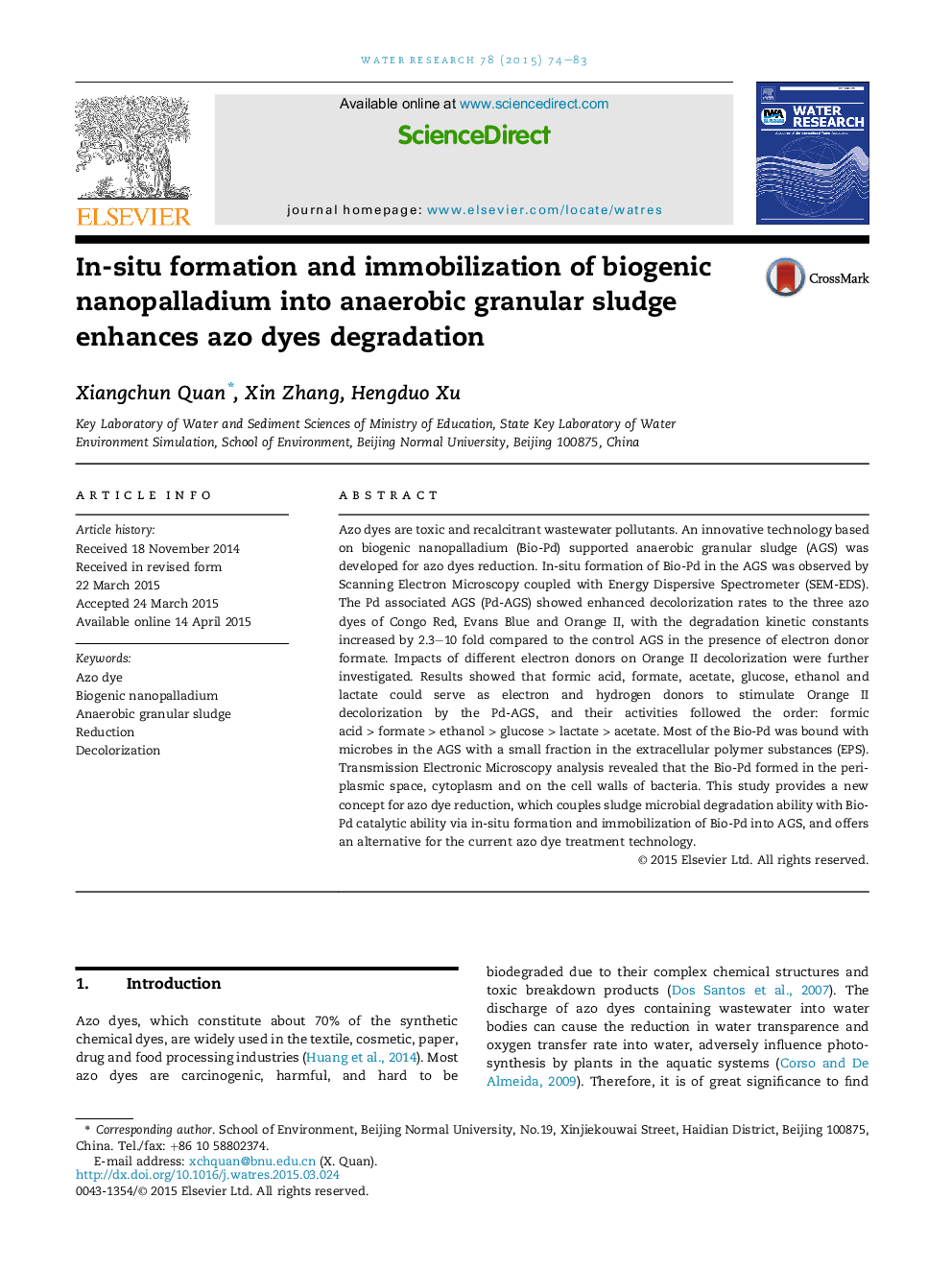| کد مقاله | کد نشریه | سال انتشار | مقاله انگلیسی | نسخه تمام متن |
|---|---|---|---|---|
| 4481116 | 1623090 | 2015 | 10 صفحه PDF | دانلود رایگان |
• In-situ formation of Bio-Pd in anaerobic granular sludge (AGS) was achieved.
• Bio-Pd hosting AGS (Pd-AGS) showed increased degradation rates to azo dyes.
• Bio-Pd distributed in periplasmic space, cytoplasm, cell walls of microbes in AGS.
• Pd-AGS coupled catalytic ability of Pd with microbial degradation ability.
• This study provides a new alternative for azo dyes degradation based on Pd-AGS.
Azo dyes are toxic and recalcitrant wastewater pollutants. An innovative technology based on biogenic nanopalladium (Bio-Pd) supported anaerobic granular sludge (AGS) was developed for azo dyes reduction. In-situ formation of Bio-Pd in the AGS was observed by Scanning Electron Microscopy coupled with Energy Dispersive Spectrometer (SEM-EDS). The Pd associated AGS (Pd-AGS) showed enhanced decolorization rates to the three azo dyes of Congo Red, Evans Blue and Orange II, with the degradation kinetic constants increased by 2.3–10 fold compared to the control AGS in the presence of electron donor formate. Impacts of different electron donors on Orange II decolorization were further investigated. Results showed that formic acid, formate, acetate, glucose, ethanol and lactate could serve as electron and hydrogen donors to stimulate Orange II decolorization by the Pd-AGS, and their activities followed the order: formic acid > formate > ethanol > glucose > lactate > acetate. Most of the Bio-Pd was bound with microbes in the AGS with a small fraction in the extracellular polymer substances (EPS). Transmission Electronic Microscopy analysis revealed that the Bio-Pd formed in the periplasmic space, cytoplasm and on the cell walls of bacteria. This study provides a new concept for azo dye reduction, which couples sludge microbial degradation ability with Bio-Pd catalytic ability via in-situ formation and immobilization of Bio-Pd into AGS, and offers an alternative for the current azo dye treatment technology.
Figure optionsDownload high-quality image (197 K)Download as PowerPoint slide
Journal: Water Research - Volume 78, 1 July 2015, Pages 74–83
